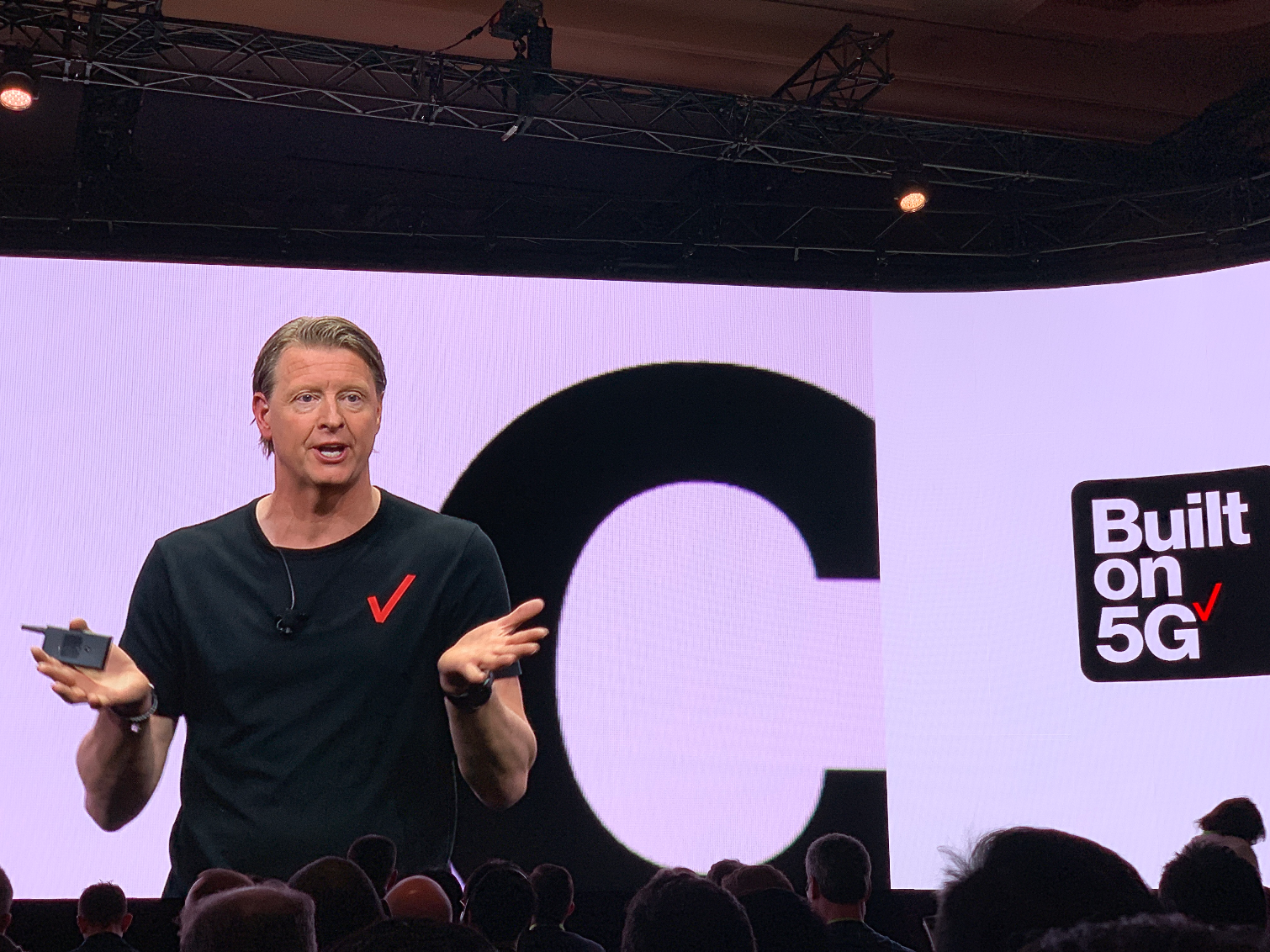Verizon Shows Real-World 5G Speeds at CES 2019
The 5G revolution isn't here yet, but the speeds are definitely faster.
LAS VEGAS — We don’t live in a 5G world yet, but you wouldn’t know it from the hype around the next generation of connectivity at CES. Verizon showed off what its 5G network is capable of today — spoiler alert: it’s not that impressive — but also what the company dreams will be possible with 5G in the future. That part is really exciting.

CEO Hans Vestberg demonstrated 5G’s current capabilities in two hilarious examples. From his keynote today (Jan. 8) on stage at the Sands Expo Center in Las Vegas, he piloted a drone connected to Verizon’s 5G network over the streets of Los Angeles. Download speeds? A cool 900 Mbps. Not bad, though not the gigabit speeds we’re hoping for from 5G. Upload speeds hovered around 100 Mbps.
Vestberg also video-conferenced in a special guest, first Verizon 5G Home customer Clayton Harris in Houston, Texas. If you’ve ever called in to a video conference call for work, you know the video resolution is terrible and there is often a lag. Harris came in crystal clear.
Then Harris performed a speed test to show the audience in Las Vegas how fast his home internet is with 20 to 30 smart devices connected to it. We watched as the test zoomed up to 1.6 Gbps, then settled in at 690 Mbps. Verizon says its 5G Home can deliver speeds up to 1 Gbps, with typical speeds around 300 Mbps. Harris’s test was well within expectations, but it didn’t blow anyone away.
Los Angeles Laker power forward Kyle Kuzma used 5G-connected goggles from Verizon to see if there was any latency shooting balls in a lightning round. There didn’t seem to be any, but Kuzma took a few tries to nail a shot. (We’ll chalk it up the fact that it’s weird to wear goggles when shooting basketballs in general.)
5G’s Potential: More Exciting Than the Present
- More: Use a fast VPN to unblock the web and surf at speed

But Verizon is working on projects that could have huge implications for those of us at home when its 5G network lights up across the country.
Get instant access to breaking news, the hottest reviews, great deals and helpful tips.
MORE: 5G Reality Check: Will It Really Impact You in 2019?
One particularly dramatic scenario is surgery. Today, surgeons are often operating blindly, or staring at a screen instead of at the person they’re opening up. But radiologist Christopher Morley, CEO of mixed reality company MediVis, said 5G will reduce latency enough that surgeons can use augmented reality to operate in real-time.
“Many procedures are still performed the same way they were done 30 years ago — blindly,” Morley said on-stage.
5G could completely reinvent medicine. Imagine a holograph of your brain layered on top of your head, guiding your surgeon where to cut. The possibility is mind-blowing.
That’s a ways off, but there are exciting projects in the works.
The New York Times announced it’s partnering with Verizon on a Journalism 5G Lab in its New York City newsroom, which will power more augmented and virtual reality experiences while offering new ways for the Times to tell stories.
Walt Disney Studios has early access to Verizon’s 5G network to shoot footage with connected drones and use the 5G-connected cloud for film production.
The 5G revolution isn’t upon us yet. It might take years to see what faster connectivity will enable. But Verizon is excited. Hell, I’m excited, too.
Caitlin is a Senior editor for Gizmodo. She has also worked on Tom's Guide, Macworld, PCWorld and the Las Vegas Review-Journal. When she's not testing out the latest devices, you can find her running around the streets of Los Angeles, putting in morning miles or searching for the best tacos.
-
shawndugout13 Why sure Verizon is excited. Their customers yet again, will be too win the bill goes up more than others for the same service. I'm still excited from leaving them and being with T-Mobile.Reply -
themadinspector Will they exceed an average data transfer rate of 1 GB /second? I understand South Korea and Europe are already faster than that.Reply
